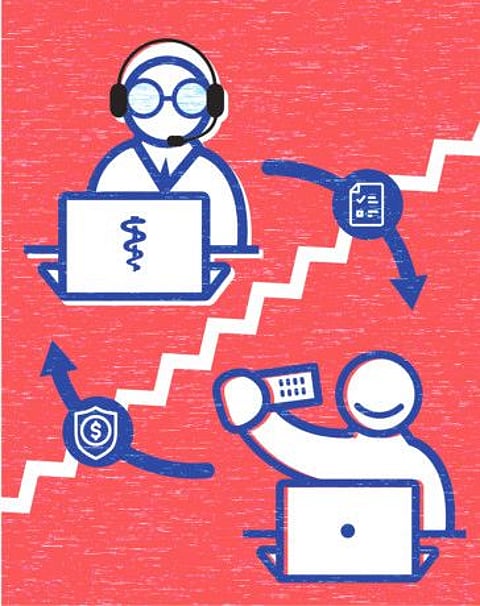Hospitals have a cure for their financial woes
COVID-19 has finally imposed the need to expand telemedicine as a viable option

When the pandemic stormed across the globe creating havoc, the healthcare industry was left grappling with a reality that it hadn’t faced in living memory. Hospitals despite being a hot zone in this situation, literally and figuratively, also became a danger zone for several patients who feared venturing past its doors to avoid catching the lethal infection.
The rampant speed meant that it hit the entire world almost at the same time, which meant that no healthcare institution was immune or in a position to counter. Unlike an air crash or an earthquake that also requires disaster management, there were no makeshift arrangements here. It became impossible for hospitals to function normally, and almost simultaneously these institutions decided to stop elective procedures, outpatient services, and non-urgent services.
This was for mainly two reasons: to save healthy people from the highly contagious infection, and to keep the hospital beds available for any eventuality.
Down on its knees
Though a veritable safety measure, this left the global healthcare industry financially crippled. Briefly put, healthcare delivery encompasses four kinds of patients: those who visit hospitals for elective surgeries, those who come for emergencies, the outpatients, and the inpatients. In the UAE, outpatients comprise approximately 70 per cent of total hospital clientele and inpatients the rest.
Elsewhere, the reverse is true. Either way, when a large chunk of the clientele decided to stay away, it automatically translated into a major cash crunch.
As it is, in the best of situations, the net profit at hospitals is not more than 5-10% on average. In the current situation in the UAE, when 70 per cent of business coming from outpatients was cut off, with only patients requiring urgent care coming in, the business from outpatients dropped to 25 per cent.
The inpatient department was affected too since no outpatients could be converted to elective surgeries. Senior consultants and super specialists became practically redundant for four months because COVID-19 management did not require them. It is generally managed by GPs, intensivists and physicians. Resultantly, hospitals took a huge hit.
On the flip side, healthcare industry also learned a few valuable lessons, which will prove to have long-term dividends. One of the most important was the need for a proper telemedicine platform, which has remained under-utilised until now.
Brush up these skills
Telemedicine has been around for 20 years and invariably used as a marketing wing for healthcare providers. During the pandemic, many hospitals naturally turned to the platform to keep in touch with their patients, albeit remotely, and use the forum to continue catering to outpatients. The UK, for example, has caught on quickly, with patients and doctors waking up to advantages of these “virtual” visits.
Doctors are now providing similar level of services and convenience to their regular patients, and as per one telemedicine company quoted in media, weekly orders jumped by 70 per cent since the outbreak. Other companies shared similar stats.
In the UAE, however, telemedicine has yet to find a firm footing and bridge the gap between patients and doctors. In an ideal scenario, telemedicine should have reached the target audience and matured with improved accessibility, remote monitoring, and payment gateways approved by insurance companies. If these were in place, 70 per cent outpatients could have been provided with the same quality care in the comfort of their homes, insurance would have gladly paid, and pharmacies would have supplied the medications at home.
Unfortunately, this did not happen, except in a few small pockets, and that too in an unstructured way.
Bring it up to scale
This situation has laid the platform to enhance telemedicine services, providing new ideas and directions. Telemedicine has a great future because the work-from-home model has proved to be a success in several fields. Companies are getting more comfortable working remote, organising most of their meetings virtually, and saving on excess cost. The same is true for healthcare. Using the technology to maximum advantage, not only can patients consult doctors, but home monitoring is possible as well, reducing visits to the hospital to quarterly from once a month on average.
Not only this, telemedicine can also open the way for all international consultations... and we’re talking virtual medical tourism here. Through these virtual visits, medical tourists can cut down their, for instance, pre-surgical visits and only fly down for the actual procedure.
- Dr. Raza Siddiqui is Executive Director, RAK Hospital.
Sign up for the Daily Briefing
Get the latest news and updates straight to your inbox







